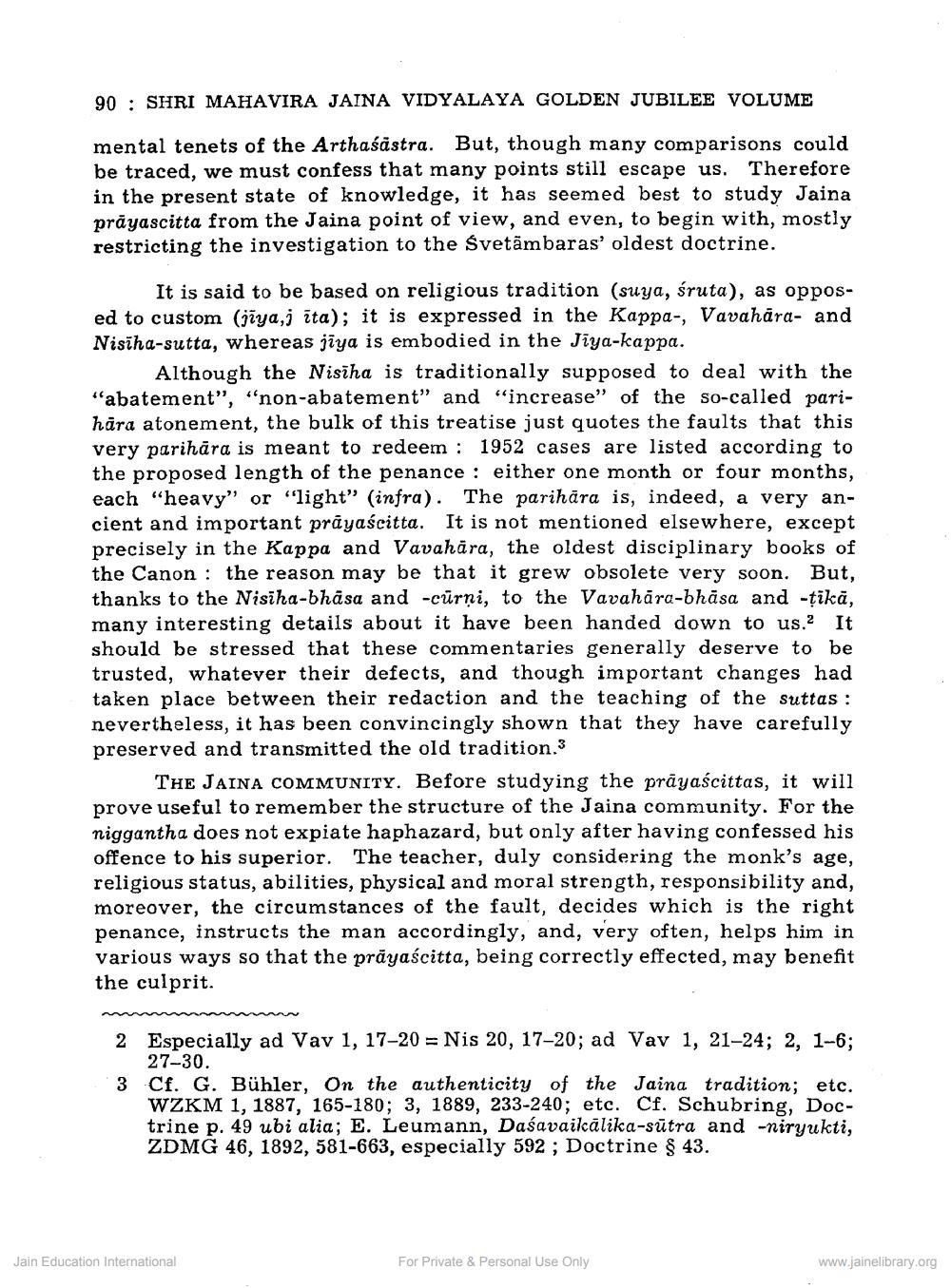Book Title: Religious Prayascittas according to old Jaina Ritual Author(s): Collete Caillat Publisher: Z_Mahavir_Jain_Vidyalay_Suvarna_Mahotsav_Granth_Part_1_012002.pdf and Mahavir_Jain_Vidyalay_Suvarna_ View full book textPage 3
________________ 90 : SHRI MAHAVIRA JAINA VIDYALAYA GOLDEN JUBILEE VOLUME mental tenets of the Arthaśāstra. But, though many comparisons could be traced, we must confess that many points still escape us. Therefore in the present state of knowledge, it has seemed best to study Jaina prāyascitta from the Jaina point of view, and even, to begin with, mostly restricting the investigation to the Svetāmbaras' oldest doctrine. It is said to be based on religious tradition (suya, śruta), as opposed to custom (jiya,j ita); it is expressed in the Kappa-, Vavahāra- and Nisiha-sutta, whereas jāya is embodied in the Jiya-kappa. Although the Nisiha is traditionally supposed to deal with the “abatement", "non-abatement" and "increase" of the so-called parihāra atonement, the bulk of this treatise just quotes the faults that this very parihāra is meant to redeem : 1952 cases are listed according to the proposed length of the penance : either one month or four months, each "heavy” or “light” (infra). The parihāra is, indeed, a very ancient and important prāyaścitta. It is not mentioned elsewhere, except precisely in the Kappa and Vavahāra, the oldest disciplinary books of the Canon : the reason may be that it grew obsolete very soon. But, thanks to the Nisiha-bhāsa and -cūrņi, to the Vavahăra-bhāsa and -ţikā, many interesting details about it have been handed down to us. It should be stressed that these commentaries generally deserve to be trusted, whatever their defects, and though important changes had taken place between their redaction and the teaching of the suttas : nevertheless, it has been convincingly shown that they have carefully preserved and transmitted the old tradition.3 THE JAINA COMMUNITY. Before studying the prayascittas, it will prove useful to remember the structure of the Jaina community. For the niggantha does not expiate haphazard, but only after having confessed his offence to his superior. The teacher, duly considering the monk's age, religious status, abilities, physical and moral strength, responsibility and, moreover, the circumstances of the fault, decides which is the right penance, instructs the man accordingly, and, very often, helps him in various ways so that the prāyaścitta, being correctly effected, may benefit the culprit. 2 Especially ad Vav 1, 17-20 = Nis 20, 17-20; ad Vav 1, 21-24; 2, 1-6; 27-30. Cf. G. Bühler, On the authenticity of the Jaina tradition; etc. WZKM 1, 1887, 165-180; 3, 1889, 233-240; etc. Cf. Schubring, Doctrine p. 49 ubi alia; E. Leumann, Daśavailcālika-sūtra and -niryukti, ZDMG 46, 1892, 581-663, especially 592 ; Doctrine § 43. Jain Education International For Private & Personal Use Only www.jainelibrary.orgPage Navigation
1 2 3 4 5 6 7 8 9 10 11 12 13 14 15 16 17 18 19 20 21 22 23 24 25 26 27 28 29 30
